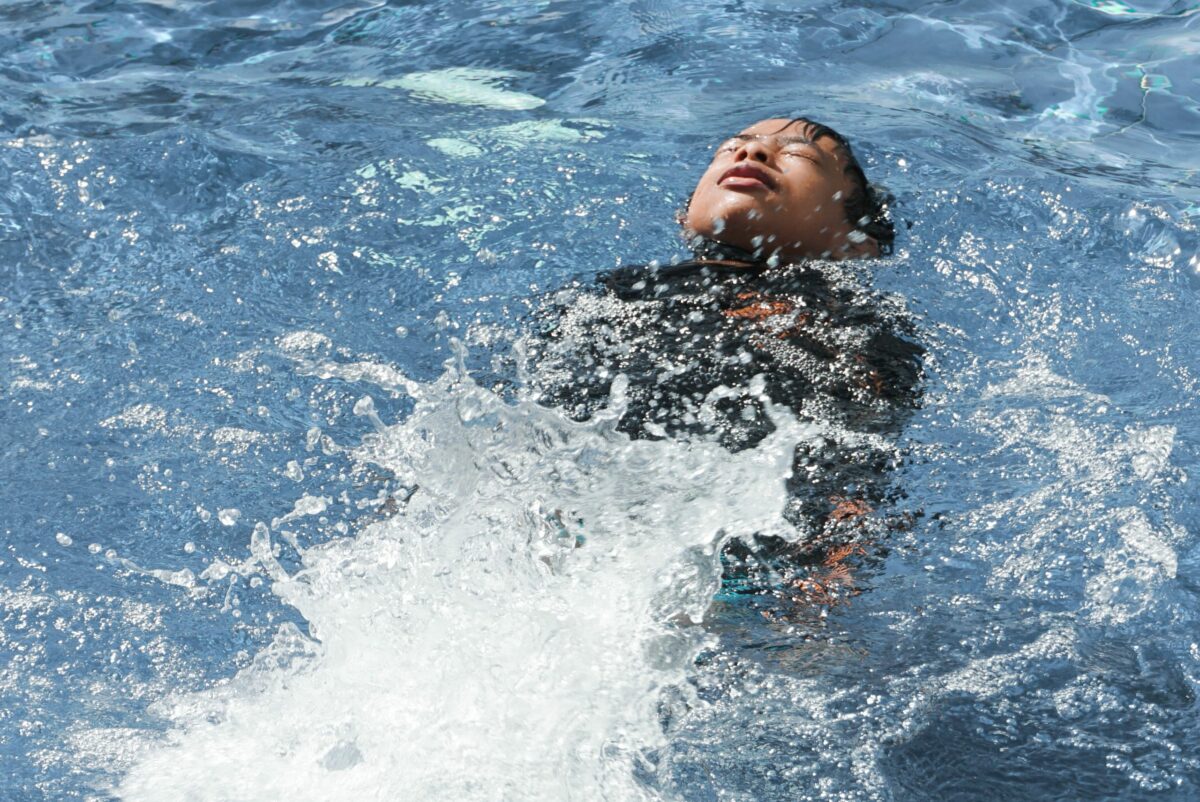
Swimming is one of the most popular hobbies— and for good reason. It’s a low-impact, high-result cardio workout that is both physically challenging and mentally stimulating. It’s also an amazing family activity. Kids as young as six months old can take swimming classes. If you want to get yourself and your family in shape, some of these ideas may inspire you to swim a few laps.
What to Wear: The right swimming gear
What gear you wear to swim depends on a lot of factors— your swimming experience, what kind of swimming you are doing and what you want to accomplish. Some of the most common equipment includes:
- Swimsuit
- Googles
- Swim floaties
- Fins
- Pool Buoy
- Kick Board
- Hand paddles
Don’t rush out and buy everything at once. Try to swim at a pool that already has this equipment so you can test it out. Most fitness centers, public pools and YMCAs have fins, hand paddles, paddles, buoys, kick boards on hand.
Where to Swim: Tips for Finding the Right Pool
Not all swimming pools are created equal. You will have different experiences at different pools. That’s why it’s important to explore multiple options before you settle on a pool for your swimming routine:
- Doing Laps: Look for a pool with designed lap lanes or lap times. Check out facilities with multiple pools, one for swimming laps or exercising and others for play.
- Teaching Kids: Research pools with infant or toddler-friendly wading pools and ask about the times that are the least busy. The more people in the pool, the more likely your child could feel anxious. Look for facilities that offer swim lessons for kids your child’s age.
- Playing and Relaxing: Seasonal, public access pools are a great place to splash, play, relax and have fun. Be sure your kids are well on their way to being strong swimmers before you let them venture in the waters without you.
Where you swim is an important part of how much you will enjoy swimming. If your goals don’t match the environment of the pool, it’s time to explore elsewhere.
How to Teach: Helping my kids learn to swim at home
Whether you have a swimming pool, bathtub or kiddie pool in the backyard, there are many ways to teach your kids the basics of swimming. Eventually you will need to practice in an actual pool, but in between those visits you can get them comfortable and confident in the water by:
- Starting with kicking. Hold your child with their back to your chest and their legs in your arms. As you move their legs in a kicking motion say “Kick! Kick! Kick!” If your water source isn’t deep enough, fill up your tub or container about six inches. Steady them on their bellies with their arms in a sphinx-like pose. Make the same kicking motions and sounds.
- Getting them comfortable being underwater. It’s important to practice brief moments underwater. Start by getting them to blow bubbles in the water with their mouths. You can then move on to actual dunking. Hold them by the waist while they sit or stand on the edge of the pool and encourage them to jump in. Holding them the whole time (and they should be wearing a life vest or some other kind of secure floatie), let them jump. Let their heads go under for just a second. When they come up be sure to hug, laugh and praise them. If you can’t get to a pool with enough depth for this, you can create a similar experience by encouraging them to get their heads and faces under the shower.
- Keeping it simple. Don’t try to teach too much too fast. Break lessons down into age-appropriate, easy-to-understand chunks so your child doesn’t get overwhelmed. If they are confused, they risk becoming disinterested with swimming entirely. And bring in some games! Learning can be fun, especially learning to swim!
What about Safety: Staying safe in and out of the water
Safety needs can change as the swimmer ages and becomes more adept. It’s important that you set ground rules with yourself and your family right away. That’s why it’s helpful to familiarize yourself with some common pool safety tips:
- Don’t run or horseplay near the pool. The ground is usually wet and slick, which means slips and falls are a higher risk.
- Look at the depth before you jump in. Don’t just jump or dive into water without first checking the depth. It’s best to avoid jumping into anything less than 9 feet deep and do not dive into water less than 12 feet deep.
- Remove all the toys and equipment after use. This applies even in your own personal pool. Put away your pool equipment after each use, especially toys. One in five people who die from drowning are under 14. Seeing a beloved toy floating in the pool is very tempting, even to kids who know they shouldn’t swim alone.
- Take breaks. If you are doing laps or other pool exercises, be sure to take breaks for water and rest. Swimming is low impact, but makes demands on your cardio and pulmonary systems. Be sure to build on your practice in increments.
Swimming brings a lot of joy to many people’s lives. It takes practice and persistence to keep it up. You can enjoy the pool alone or with your family when you follow some of these tips to have safe fun in the sun.
Photo: Unsplash

